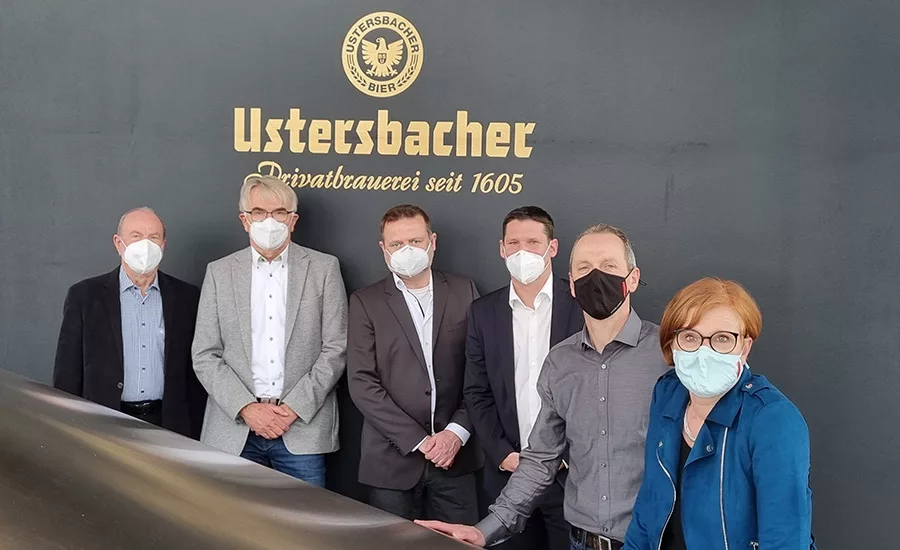Protein Recovery
Bavarian brewery testing a method to upcycle protein from spent brewers’ grains
In the past, spent brewers’ grains either went to farms, or brewers spent money to haul them away

With Steinecker’s development project, the Ustersbacher Brauerei will be able to use brewer’s grains and yeast as sources of protein and energy. From left to right: Two development specialists, Prof. Waldemar Reule and Dr. Rainer Gottschalk; Dr. Ralph Schneid and Dirk Hämling (both Steinecker GmbH); Josef Geh (technical director at Ustersbacher Brauerei) and the owner of the Ustersbacher Brauerei, Stephanie Schmid.
For most breweries, brewers’ grains are what’s left over after brewing and often merely used as animal feed. In some cases, breweries have to pay for their disposal. But, much more is hiding in the residual materials from the brewing process. They offer not only rewarding options in terms of sustainability, but also some profitable extra business for breweries. A project pursued jointly by Steinecker (supplier of brewing equipment) and two development specialists, Prof. Waldemar Reule and Dr. Rainer Gottschalk, demonstrates how this process can be successfully managed to obtain protein in addition to energy to run the plant. The concept they have developed has been put into action at the Ustersbacher Brauerei in Bavaria.
In the past, Steinecker had developed the Brewnomic process, which was designed to be energy self-sufficient. A brewery could convert spent materials into biogas, which could be used to provide electrical and heat energy to the brewery via a combined heat and power unit (CHP).
But, spent grains and yeast are residual materials that also contain protein. And it’s precisely this protein that can provide another revenue stream for a brewery. Where Steinecker’s Brewnomic process has focused only on using spent residual materials for energy recovery, the project team, consisting of Steinecker, the two development specialists and the brewery staff, has developed a process for material recovery. This process consists of three steps:
- First, proteins are extracted from the residual materials. This is done in a three-vessel system, similar to the concept of Steinecker’s CombiCube brewhouse. Following dispersion and hydrolysis, protein is separated by means of membrane filtration.
- In the second step, the remaining biomass is acidified. After that mineral fertilizer is obtained by means of an ion exchanger.
- This is followed by energy recovery in the form of biogas production. The brewery’s wastewater is also added and purified here.
The Ustersbacher Brauerei in Bavaria will be the first to use the concept developed for turning spent-grains upcycling on the shopfloor into protein recovery a reality. The preconditions are ideal: “Over the past ten years, we’ve already implemented a number of measures,” says Brewery Owner and Manager Stephanie Schmid. “With each of these, we’ve taken one step at a time towards achieving our goal: to become an energy-self-sufficient brewery using the Brewnomic concept. So, it is only logical that our aim now is to also make maximally sustainable use of the residual materials from the brewing process.”
Protein—a highly valuable commodity
Potential buyers of this highly sought-after raw material include not only dairies and food-processing plants, but also producers of food supplements and the cosmetics industry. Moreover, selling the mineral fertilizer and the savings achieved by using biogas for CHP also pay off for the brewery. So, the sum of annual revenues results in a return on investment (ROI) of just a few years, which is substantially shorter than that of a classical biogas plant where the spent grains are used only for energy recovery.
Looking for a reprint of this article?
From high-res PDFs to custom plaques, order your copy today!







